The snow goose is a North American species of goose that is widespread and common. Their name comes from their bright white plumage, or feathers. However, some snow geese are gray/blue colored, and known as “blue morphs.”
You often see these birds in massive flocks grazing in fields and meadows. Read on to learn about the snow goose.
Description of the Snow Goose
Snow geese come in two colors, the more common white morph, and the blue morph. White morph snow geese have white feathers with black wing tips. Blue morphs vary slightly, but mostly have dark gray-blue feathers and small patches of white, often on their heads.
Both blue and white morphs have the same, hefty body shape. They have a 4.5 ft. wingspan, and weigh about 7 pounds.
Interesting Facts About the Snow Goose
These birds are very populous, and quite widespread across North America depending on the season. So much so that humans have come up with a number of terms to refer to them when in groups.
A group of geese is called a “gaggle” when they are on the ground, or floating in water. They are called either a “skein,” a “team,” or a “wedge” when in flight. When they are flying closely clumped together, they are called a “plump.”
Learn what other things make snow geese interesting below.
- Comeback Kid – Even though they have booming populations now, snow geese were not always so numerous. In fact, in 1916 their numbers became so dangerously low that the government made it illegal to hunt them. Through careful regulation and protection, snow geese made a triumphant recovery.
- Grown-Up Goslings – All species of waterfowl have young that are relatively independent. They follow their mothers out of the nest soon after hatching, and eat food on their own. Snow geese goslings take this a step further. By the time they are a few days old they don’t even need their mothers to keep them warm anymore.
- Sir Snacks-a-Lot – Snow geese spend a lot of their time eating, especially during the breeding season. A female goose getting ready to lay eggs grazes for up to 18 hours in a single day! This is because once she begins incubating her eggs she cannot leave them very often to eat.
- Not So Snowy – These geese have white eggs, like many species of waterfowl. They don’t stay white for long however. Female geese lay one egg per day until their nest is full. Researchers can tell which eggs the female laid first because they get dirty the fastest!
Habitat of the Snow Goose
You can divide snow goose habitat preferences into two primary categories, breeding and migrating/wintering. While they are breeding, these geese live along the tundra in flood plains, ponds, or lakes. Most do not breed on the coast, but they do live near the coasts.
While they are migrating or overwintering, they live in a variety of marshes, ponds, lakes, bays, and other water sources. They also inhabit more urban areas, like farms and parks.
Distribution of the Snow Goose
These geese live and migrate over a large expanse of North America. Their breeding grounds are the northernmost reaches of Canada along the coast. Outside of the breeding season, they migrate throughout Alaska, Canada, and the northern United States.
There are several different patches of area that they spend the winter in. Some overwintering ranges include the northeast United States, the gulf coast into Mexico, and small patches along the west coast of the United States.
Diet of the Snow Goose
Like many species of waterfowl, snow geese are primarily herbivores, but eat some insects when they are breeding to help produce eggs and rear their young.
Some of their favorite food sources include grasses, roots, small shrubs, aquatic vegetation, weeds, and clovers. Some of their favorite plants are willows, horsetails, cattails, wild rice, saltgrass, and more.
Snow Goose and Human Interaction
Because they have increased in numbers so quickly, in some areas farmers view this species as a pest. Snow geese do stop and feed on agricultural crops, particularly oats and wheat.
Despite their high numbers, the U.S. Fish & Wildlife Service still strictly regulates hunting, as it does with all waterfowl. Because of this, the IUCN considers this species as Least Concern.
Domestication
Humans have not domesticated this goose in any way.
Does the Snow Goose Make a Good Pet
No, snow geese do not make good pets. They are wild animals, and behave very differently than domestic geese or ducks. It is also illegal in most places to own a snow goose as a pet.
Snow Goose Care
This species is very gregarious, and often lives in large groups. Because of this, when they live in a zoological setting they must have a relatively large flocks of birds.
This species, like all waterfowl, needs a large water source. Their enclosure should also have plenty of grassy fields or meadows for them to graze for food. Zookeepers also provide them with pelleted goose feed to ensure they receive a balanced diet.
Behavior of the Snow Goose
These geese spend the vast majority of their time eating or resting. At any given time, and any given place, both on land and in the water, they eat and/or snooze. Seasonally they migrate long distances to reach their breeding grounds.
Each year they breed with the same mate, until one of the pair dies. Once they reach their breeding grounds, both the male and the female become quite territorial of their nest.
Reproduction of the Snow Goose
Nests are rarely more than a small indent in the ground filled with feathers and soft vegetation. The female lays four eggs on average, and incubates them for a little under a month. While the female is incubating the eggs, the male protects her from predators.
The goslings follow their mother soon after they hatch, and she leads them to food. It takes nearly two months for the goslings to learn how to fly.



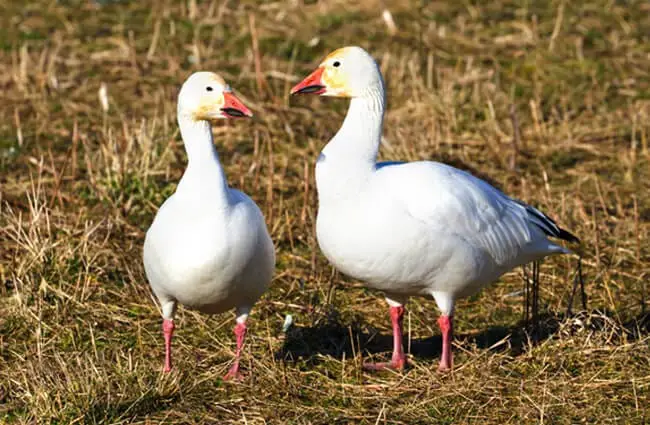
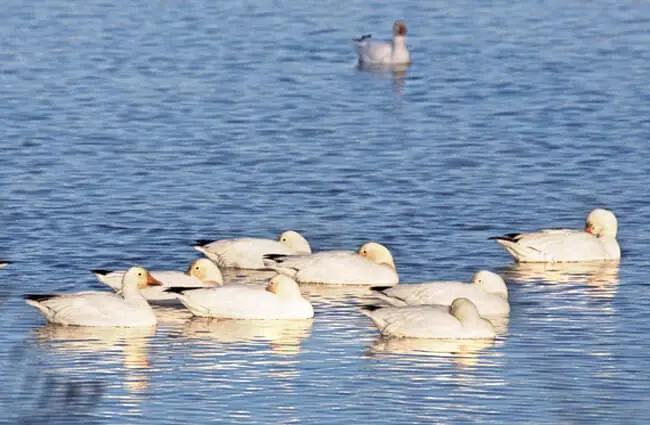
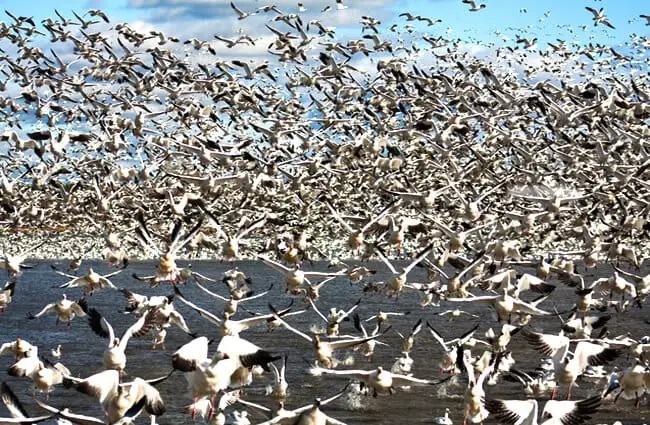
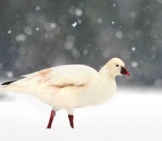
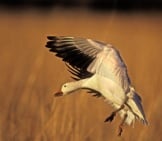
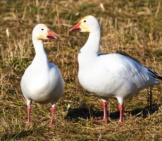
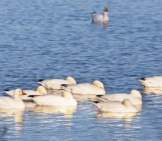
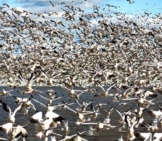
![Red Angus Closeup of a beautiful Red Angus cowPhoto by: U.S. Department of Agriculture [pubic domain]https://creativecommons.org/licenses/by/2.0/](https://animals.net/wp-content/uploads/2020/03/Red-Angus-4-238x178.jpg)












![Red Angus Closeup of a beautiful Red Angus cowPhoto by: U.S. Department of Agriculture [pubic domain]https://creativecommons.org/licenses/by/2.0/](https://animals.net/wp-content/uploads/2020/03/Red-Angus-4-100x75.jpg)

